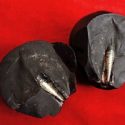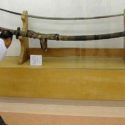Are 3-Billion-Year-Old Klerksdorp Spheres Product Of Advanced Alien Machinery?
Humanity has successfully conquered space for decades. Comprehending the processes that occur in the galaxy is thought to bring us closer to understanding the secrets of life. Experts are perplexed by the discovery of 2.8 billion-year-old Klerksdorp Spheres in pyrophyllite in the tiny village of Ottosdal in South Africa’s Western Transvaal.
The “Klerksdorp spheres” or “Ottosdal objects” (a name created by geologist Paul V. Heinrich) are spherical objects discovered in South African pyrophyllite deposits 3.0 to 3.1 billion years old (Precambrian). Ancient astronaut theories have paid close attention to and speculated about the artifacts. According to the views, the artifacts are either genuine or possible “Out-of-Place Artifacts” (OOPARTs), which are allegedly direct proof of a civilization that lived billions of years ago or before the Biblical Flood. They also thought that intelligent extraterrestrials created the Ottosdal items.

The Klerksdorp spheres have been perplexing scientists for more than a decade since neither their origin nor purpose have been determined. Because of the antiquity of the balls, some believe they are alien relics, as human life could not have existed billions of years ago.
At least 200 Klerksdorp residents By the early 2000s, spheres ranging from 2.5 to 10 cm have been collected. According to Paul Heinrich, a guy called John Hund purchased one of the spheres and brought it to the University of California to be studied.
A Klerksdorp spherical was odd and perplexing, with an internal fibrous structure. Hund went on to say that even NASA lacked the technology to manufacture such objects and that the only way to do so would be in zero gravity.
Such spheres were discovered during mining operations in South African mines during the following decades, and by the early 2000s, at least 200 specimens ranging in size from 2.5 to 10 cm had been gathered. Almost all of the mystery Klerksdorp balls recovered had a perfectly spherical shape with a notch in the center, and one of the spheres had three parallel incisions.
Roelf Marx, the curator of the Klerksdorp Museum in South Africa, described spheres with a harsh surface that were at least 2.8 billion years old in 1984. He told the spherical as unusual and perplexing, with a fibrous structure inside.

According to geologist Paul Heinrich, John Hund’s allegations in the letter were unsubstantiated. He discovered that the South African spheres he analyzed were not correctly balanced and formed.
Roelf also noted that one of the balls in the museum’s exposition could rotate on its own, even though the museum was not vibrating. The sphere was separated in a closed display case from any external sources of influence.
According to Michael Cremo and other prehistoric culture specialists, these spheres contribute to a body of evidence indicating intelligent life existed on Earth long before a standard interpretation of history placed it here. He has traversed the world collecting data on out-of-place artifacts (ooparts). His results have been published in the famous book “Forbidden Archaeology: The Hidden History of the Human Race.”
Marbles from Moqui
Similar spheres were discovered in Utah. They are called Moqui marbles or Moqui balls and are roughly 2 million years old. According to legend, the Hopi Native Americans’ deceased ancestors would play games with the marbles and leave them as signs to their families that they were happy and well.

Moqui marbles have a sandy inside and a complex, spherical iron oxide surface. Heinrich discovered that one of the Klerksdorp spheres was formed of hematite, a mineral type of iron oxide. He found another Klerksdorp sphere made of the mineral wollastonite and hematite, and goethite, a hydrated iron oxide.
Those who claim that these spheres are natural occurrences give several explanations for how they may have formed. Dr. Karrie Weber of the University of Nebraska–Lincoln is studying bacteria that she believes may have assisted in the formation of the spheres through byproducts of their life cycles.
Geologist Dave Crosby, who has studied the Moqui marbles in Utah, believes that a meteor strike spread molten spheres, which eventually solidified on sand grains. According to RocksandMinerals.com, a thorough study revealed no trace of a meteor strike. He then proposed a scenario in which rainfall dissolves iron and other minerals and transports them to groundwater. Ions are deposited around sand grains when they travel through groundwater, producing spheres.
Cremo and others who believe ooparts are evidence of advanced prehistoric civilizations argue that mainstream scientists should be more daring and prepared to embrace data that contradicts prevalent viewpoints.
Ancient astronaut theories think that 3 billion years ago, aliens transported spherical containers containing unicellular life forms to our planet.



